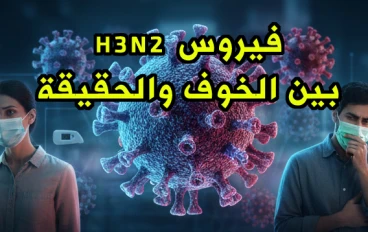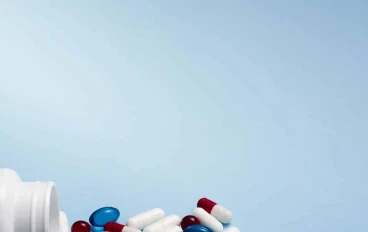
“Stroke Alert: Early Warning Signs You Should Never Ignore”
1. Introduction: The Silent Threat
A stroke is often referred to as a “silent killer” because its symptoms can be subtle and easily overlooked. Understanding these early warning signs can make a significant difference in treatment outcomes and recovery.
2. Sudden Numbness or Weakness
One of the most common signs of a stroke is sudden numbness or weakness, especially on one side of the body. This can affect the face, arm, or leg.
3. Trouble with Vision
Stroke victims may experience sudden blurred or double vision, or even loss of vision in one or both eyes.
4. Difficulty with Speech
Slurred speech or difficulty understanding speech is another early sign of a stroke. The person may be confused or have trouble forming words.
5. Loss of Balance or Coordination
A sudden loss of balance or coordination, or trouble walking, can indicate a stroke. The person may stumble or have difficulty with simple tasks.
6. Severe Headache
A sudden, severe headache with no known cause can be a symptom of a stroke. This is often accompanied by dizziness or altered consciousness.
7. Facial Drooping
One side of the person’s face may droop or feel numb. When the person smiles, the smile is uneven.
8. Time is of the Essence
If you notice one or more of these symptoms, it’s crucial to seek medical attention immediately. Remember the acronym “FAST”: Face drooping, Arm weakness, Speech difficulty, Time to call emergency services.
9. Prevention and Risk Factors
Understanding the risk factors, such as high blood pressure, smoking, and diabetes, can help prevent strokes. Regular exercise, a healthy diet, and regular check-ups are also essential.
10. Conclusion: Stay Informed, Stay Healthy
Knowledge is power. By recognizing the early signs of a stroke, you could save a life – maybe even your own. Stay informed, stay vigilant, and stay healthy.
11. Early Diagnosis
Early diagnosis of a stroke can limit the damage and improve the outcome. This is why it’s crucial to seek medical attention immediately if you or someone else is showing symptoms of a stroke.
12. Stroke Types
There are two main types of strokes: ischemic and hemorrhagic. Ischemic strokes, the most common type, occur when a blood clot blocks blood flow to the brain. Hemorrhagic strokes occur when a blood vessel in the brain bursts, causing bleeding in the brain.
13. Post-Stroke Rehabilitation
Rehabilitation is a critical part of recovery after a stroke. This can include physical therapy, occupational therapy, and speech-language therapy.
14. Living with Stroke
Living with the aftermath of a stroke can be challenging, but many people lead fulfilling lives with the right support and resources.
15. The Importance of Support
Support from family, friends, and healthcare professionals is crucial for stroke survivors. Support groups can also provide a space for survivors to share their experiences and learn from others.
16. Understanding Stroke Risk Factors
Certain factors increase the risk of having a stroke. These include high blood pressure, smoking, diabetes, high cholesterol, obesity, and a family history of stroke. Lifestyle changes can help manage these risk factors.
17. Stroke and Mental Health
A stroke can have significant psychological impacts, including depression and anxiety. Mental health professionals can provide necessary support and treatment.
18. The Role of Medication
Medications play a crucial role in both the prevention and treatment of strokes. Anticoagulants and antiplatelet drugs can help prevent blood clots, while other medications can help control high blood pressure and cholesterol levels.
19. The Future of Stroke Treatment
Research is ongoing to develop new and more effective treatments for stroke. This includes exploring the use of stem cells, which have the potential to repair damage caused by a stroke.
20. Final Thoughts: Knowledge is Power
Understanding the early signs of a stroke and seeking immediate medical attention can save lives. Stay informed and take proactive steps to maintain your health.
21. Stroke Recovery and the Brain
The brain’s ability to heal and reorganize itself, known as neuroplasticity, plays a crucial role in stroke recovery. Rehabilitation exercises can help stimulate this process.
22. Nutrition and Stroke Prevention
A healthy diet can help reduce stroke risk. This includes eating plenty of fruits and vegetables, lean proteins, and whole grains, while limiting intake of saturated fats, cholesterol, and sodium.
23. Exercise and Stroke Prevention
Regular physical activity can also lower stroke risk by improving overall cardiovascular health. It’s recommended to aim for at least 150 minutes of moderate-intensity exercise each week.
24. Stroke and Sleep
Research has shown a link between poor sleep quality and increased stroke risk. Good sleep hygiene is important for overall health and stroke prevention.
25. The Role of Regular Check-ups
Regular medical check-ups can help detect health issues that increase stroke risk, such as high blood pressure or irregular heartbeat, early on. Early detection and management of these conditions can help prevent strokes.
26. Stroke and Age
While stroke risk increases with age, a stroke can happen at any age. It’s important to be aware of the signs and symptoms regardless of your age.
27. Stroke and Gender
Men have a higher risk of stroke, but women account for more than half of stroke deaths. Factors such as pregnancy and hormone replacement therapy can increase stroke risk in women.
28. Stroke and Race
Certain ethnic groups, such as African Americans, have a higher risk of stroke. This is partly due to higher rates of hypertension and diabetes in these populations.
29. Stroke and Family History
Having a family history of stroke can increase your risk. If a parent, grandparent, or sibling has had a stroke, you may be at greater risk.
30. Conclusion: Be Stroke Aware
Being aware of the risk factors and signs of stroke can help you take action to prevent it. Remember, every second counts when dealing with a stroke. If you or someone else shows signs of a stroke, call emergency services immediately.







































